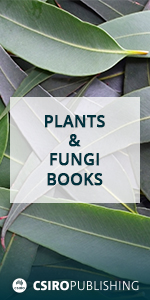
Functional Plant Biology
Volume 49 Number 1 2022
This paper reviews important features implementing experiments using antisense oligonucleotide (ASO) technology in plants. Strong social non-acceptance of GMO creates demand for the development of the alternative technologies not connected with introducing of foreign genes into the plant genome. ASO technology seems to be one of the solution that meets these demands. Many successful applications of ASO in different plant species have already been reported. For the first time, we present ASOs successfully applied in Cucumis sativus L. (cucumber).
FP21148Proteome changes and associated physiological roles in chickpea (Cicer arietinum) tolerance to heat stress under field conditions
 , Carl-Otto Ottosen, Eva Rosenqvist and Samson B. M. Chimphango
, Carl-Otto Ottosen, Eva Rosenqvist and Samson B. M. Chimphango 
Increased frequency and duration of high temperatures continues to limit crop development. An analysis of chickpea proteome to help uncover proteins and enzymes contributing to its heat tolerance and associated physiological processes is essential. Proteins related to protein synthesis, intracellular traffic, transport and defence were upregulated in heat-tolerant genotypes consistent with their previously unaltered physiological and biochemical performance. Identified candidate proteins and their specific roles in the tolerance to heat stress in chickpea are integral to further crop improvement initiatives.
Drought is a major abiotic constraints that will have a strong negative impact on Mediterranean viticulture. Proteomic analysis of drought-tolerant Tunisian local grapevine (Vitis vinifera L.) cultivar Razegui revealed that water deficit affected many proteins, particularly those involved in photosynthesis, stress defence, energy and carbohydrate metabolism, protein synthesis/turnover and amino acid metabolism. The results have expanded our knowledge of the mechanisms by which grapevines respond to drought and may assist in designing and developing more drought-tolerant grapevines in the future.
Since no study has analysed the role of combined stress in the downregulation or upregulation of CAM activity either in facultative or constitutive CAM plants, we presented the first evidence showing the regulation of CAM expression under the combination of simultaneous drought and salt stress in Aloe vera L. Furthermore, we showed that the changes in the magnitude of CAM expression can alter both the rate of photosynthetic electron transport and the activity of antioxidative system in a constitutive CAM species.
This study describes the effects of temperature and light combination on young Vitis vinifera L. cv. Shiraz vines. The low temperature and low or high light conditions are favourable for growth characters of young vegetative Shiraz vines. However, high temperature and high light conditions are detrimental.
The recalcitrant seeds in a medicinal plant Panax notoginseng(Burk) F.H. Chen are characterised by the dehydration sensitivity. Using iTRAQ-based proteomic and RNA-seq analysis, we find that the dehydration sensitivity of P. notoginseng seeds is gradually decreased, the lack of late embryogenesis abundant (LEA) proteins or inadequate accumulation in the embryo and the low activity of glutathione metabolism might be the key factors leading to the dehydration sensitivity of recalcitrant P. notoginseng seeds. The increased activity of energy metabolite is one of important signals for recalcitrant seeds to accomplish the after-ripening process.
Melatonin and calcium are highly conserved signals involved in salt tolerance. Impact of individual application both signal molecules on photosynthesis has been well proven, but detail of interplay of between them on regulating photosynthesis under salt stress has been not studied. Thus, it was investigated in this research. Results showed that impact of melatonin on photosynthesis and reducing oxidative stress mediated through Ca/CAM signalling pathway.
FP21109StWRKY13 promotes anthocyanin biosynthesis in potato (Solanum tuberosum) tubers
 , Zhonghua Zhang, Yanan Zhao, Dalong Guo, Xijuan Zhao, Wen Gao, Juping Zhang and Botao Song
, Zhonghua Zhang, Yanan Zhao, Dalong Guo, Xijuan Zhao, Wen Gao, Juping Zhang and Botao Song
Anthocyanin can not only protect plants from biotic and abiotic stresses, but also play an important role in human health. Over-expressing the StWRKY13 gene promoted anthocyanin biosynthesis in potato (Solanum tuberosum L.) tubers, and the expression of StCHS, StF3H, StDFR and StANS could be significantly activated. This is the first report on the regulation of anthocyanin synthesis by WRKY gene in potato, so the findings enrich the theoretical basis for anthocyanin formation in coloured potato tubers.




